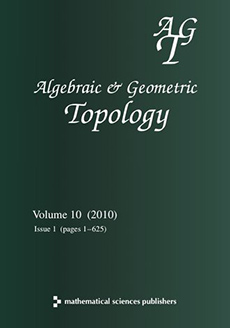Abstract
We construct effective GKM –actions with connected stabilizers on the total spaces of the two –bundles over with identical GKM graphs. This shows that the GKM graph of a simply connected integer GKM manifold with connected stabilizers does not determine its homotopy type. We complement this by a discussion of the minimality of this example: the homotopy type of integer GKM manifolds with connected stabilizers is indeed encoded in the GKM graph for smaller dimensions, lower complexity, or lower number of fixed points. Regarding geometric structures on the new example, we find an almost complex structure which is invariant under the action of a subtorus. In addition to the minimal example, we provide an analogous example where the torus actions are Hamiltonian, which disproves symplectic cohomological rigidity for Hamiltonian integer GKM manifolds.
Citation
Oliver Goertsches. Panagiotis Konstantis. Leopold Zoller. "GKM manifolds are not rigid." Algebr. Geom. Topol. 22 (7) 3511 - 3532, 2022. https://doi.org/10.2140/agt.2022.22.3511
Information





